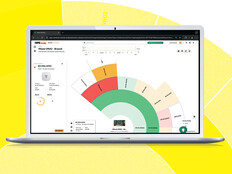Big Brainy Data Pipe

From his vantage point as entrepreneur-in-residence at Benchmark Capital in fall 2001, Govind Kizhepat watched a steady stream of companies coming through the venture capital firm’s offices looking for finances to launch data-intensive applications. It became clear, Kizhepat recalls, that there was a pressing need to move data around more efficiently and intelligently.
By February 2002, with backing from Benchmark and other venture capital firms, the semiconductor industry veteran had founded NetXen to do just that. NetXen has since grown to a 120-person company operating out of two offices: headquarters in Santa Clara, Calif., and a satellite in Pune, India.
“Immediately after 9/11, there was a data explosion everywhere, in finance, in media and other industries,” Kizhepat says. “Traditional point solutions to transfer data in a particular situation were obviously going to fall short. A radically different architecture was needed.”
Last spring, after four years of design and testing, NetXen rolled out the Intelligent NIC, which the company touts as the first intelligent network interface card for high-volume 10-Gigabit Ethernet deployments. Laying the groundwork for what NetXen describes as the “agile data center,” the integrated hardware-software solution not only offers the fat data conduit of 10 Gig-E for blazing fast I/O processing but also provides built-in layers of programmable intelligence. That means Intelligent NIC, with circuit-board-level and dual-ported blade manifestations of NetXen’s 10 Gig-E accelerators, can evolve with the network and data center.
Full Speed Ahead
NetXen designed its technology to accelerate a broad range of networking protocols — including Transmission Control Protocol/Internet Protocol, Remote Direct Memory Access, Internet SCSI and the iSCSI Extension for RDMA — and the built-in intelligence is intended to optimize business processes, not just manage contention avoidance, Kizhepat says. By shifting I/O processing away from the CPU, the Intelligent NIC also has the benefit of providing up to 50 percent reductions in power consumption and cooling costs, he says.
The product was always intended for volume 10 Gig-E markets, says Kizhepat, and the launch announcement included news of alliances with system manufacturers Hewlett-Packard and IBM, who are incorporating NetXen technology into their equipment. Kizhepat notes that the company’s technology is available for and works with all kinds of network and data center environments.
Staking a claim on the 10 Gig-E market space pits NetXen directly against major players such as Intel, says analyst Anne MacFarland of the Clipper Group.
“I make the analogy that what NetXen does is like what a good sous-chef does in a kitchen,” MacFarland says. “Their role is not really obvious. But by speeding and managing the I/O functions of the system, they can make all servers work better and make all business processes work better — just as the sous-chef improves everything that comes out of the kitchen without getting a lot of credit.”

According to MacFarland, the basic premise of NetXen technology — offloading I/O management from the central processing portion of a system — is not new, but the startup approaches it deftly. The flexibility of NetXen’s approach to 10 Gig-E is a key to the company’s early success, she says.
The technology can be deployed incrementally and offers benefits to users of all sizes, from vast enterprises that must move mountains of data to small businesses looking for speed and economy, MacFarland says. The increase in multimedia applications is making fat data pipes a necessity in many data centers. NetXen also supports virtualization, speeding data rates for virtual machines as well as physical ones and facilitating server consolidation, she says.
NetXen “complements all kinds of technology. It doesn’t matter what hardware you’re using or which operating system,” MacFarland says. “It accelerates whatever you need to have accelerated.”
The power-saving aspects of NetXen’s technology will also become increasingly important as users try to control the costs of their overheated, juice-gulping data centers, says Kizhepat. “Our ability to keep adding firmware and software on the chip makes a real difference,” he says. “The other guys hard-wire on a piece of silicon, and that’s not going to work in the ever-changing world of the Internet.”







